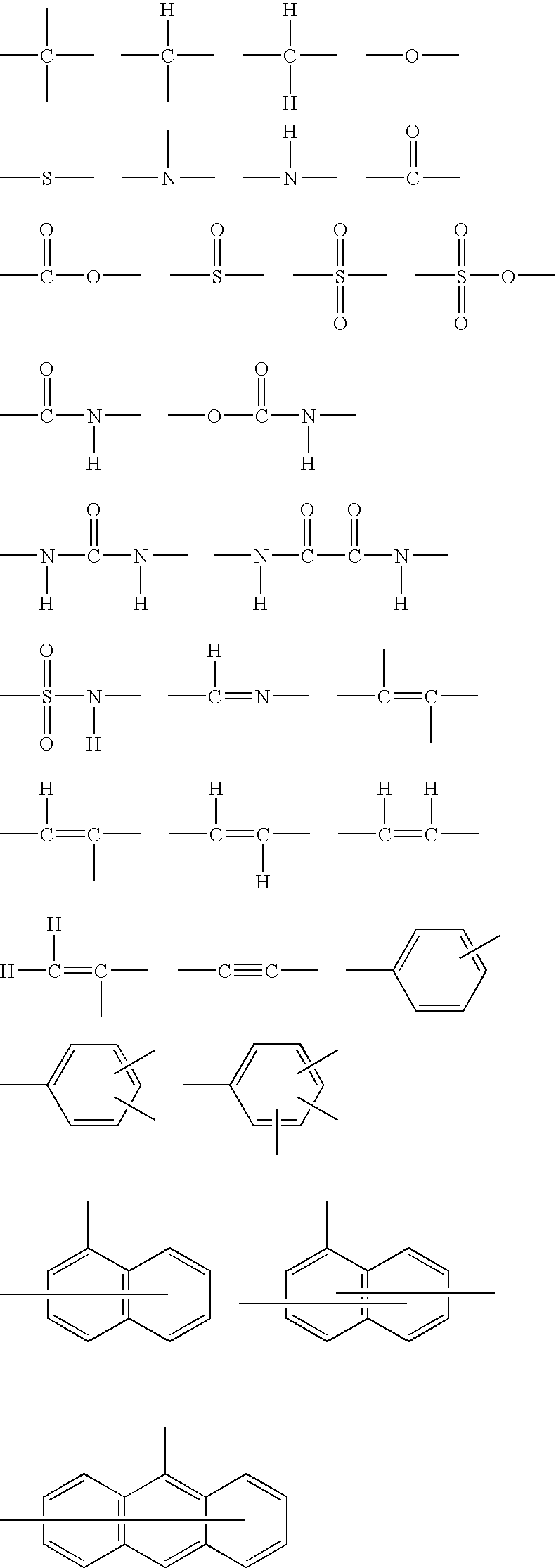Method for producing shape-anisotropic metal particles, coloring composition, photosensitive transfer material, substrate with a black image, color filter, and liquid crystal display element
a technology of metal particles and color filters, applied in the direction of instruments, lighting and heating equipment, transportation and packaging, etc., can solve the problems of deterioration of tft, high cost, and high light-blocking ability
- Summary
- Abstract
- Description
- Claims
- Application Information
AI Technical Summary
Benefits of technology
Problems solved by technology
Method used
Image
Examples
example 1
Coloring Composition
Synthesis of Polymer S-1
[0279]1.22 parts of pentaerythritol tetrakis (3-mercaptopropionate) (PEMP) (made by Sakai Chemical Industry Co., Ltd.), and 30.0 parts of terminal methacryloylated polymethylmethacrylate (trade name: AA-6, made by Toagosei Co., Ltd.) were dissolved in 46.8 parts of methyl ethyl ketone, and heated to 80° C. under a nitrogen gas stream. 0.03 parts of 2,2′-azo bis(2,4-dimethylvaleronitrile) (trade name: V-65, made by Wako Pure Chemical Industries, Ltd.) was added thereto, and heated at 80° C. under a nitrogen gas stream for a further 2 hours. After cooling to room temperature, a 20% solution of the polymer S-1 shown below (weight average molecular weight: 18,000; polymer dispersant according to the invention) was obtained by adding 78.1 parts of methyl ethyl ketone.
Polymer S-1: (1 / 2) Adduct of
[0280]
[0281]As a raw material silver compound solution, 1.8 g of silver acetate and 0.28 g solids content by weight of the polymer S-1 were added to 45 ...
examples 2 to 6
Example of Synthesis of Polymer. S-2
[0283]0.81 parts of pentaerythritol tetrakis (3-mercaptopropionate) (PEMP) (made by Sakai Chemical Industry Co., Ltd.), and 30.0 parts of terminal methacryloylated polymethylmethacrylate (trade name: AA-6, made by Toagosei Co., Ltd.) were dissolved in 46.2 parts of methyl ethyl ketone, and heated to 80° C. under a nitrogen gas stream. 0.03 parts of 2,2′-azo bis(2,4-dimethylvaleronitrile) (trade name: V-65, made by Wako Pure Chemical Industries, Ltd.) was added thereto, and heated at 80° C. under a nitrogen gas stream for a further 2 hours. After cooling to room temperature, a 20% solution of the polymer S-2 shown below (weight average molecular weight 21,000; polymer dispersant according to the invention) was obtained by adding 77.0 parts of methyl ethyl ketone.
Polymer S-2: (1 / 3) Adduct of
[0284]
[0285]Silver particle-containing liquids of Examples 2 to 6 were obtained in a similar manner to the silver particle-containing liquid of Example 1, except...
example 7
Synthesis of Polymer S-3
[0287]6.58 parts of pentaerythritol tetrakis (3-mercaptopropionate) (PEMP) (made by Sakai Chemical Industry Co., Ltd.), and 30.0 parts of methoxy polyethylene glycol #1000 methacrylate (trade name: NK ESTER M-230G, made by Shin-nakamura Chemical Co., Ltd.) were dissolved in 54.9 parts of methyl ethyl ketone, and heated to 80° C. under a nitrogen gas stream. 0.06 parts of 2,2′-azo bis(2,4-dimethylvaleronitrile) (trade name: V-65, made by Wako Pure Chemical Industries, Ltd.) was added thereto, and heated at 80° C. under a nitrogen gas stream for a further 2 hours. After cooling to room temperature, a 20% solution of the polymer S-3 shown below (weight average molecular weight 2,200; polymer dispersant according to the invention) was obtained by adding 91.5 parts of methyl ethyl ketone.
Polymer S-3: (1 / 2) Adduct of
[0288]
[0289]Production of Photosensitive Material
Preparation of Connected Gold Particles Dispersion Liquid
[0290]A solution of a mixture of 150 g of 1N ...
PUM
| Property | Measurement | Unit |
|---|---|---|
| particle size | aaaaa | aaaaa |
| thickness | aaaaa | aaaaa |
| size | aaaaa | aaaaa |
Abstract
Description
Claims
Application Information
 Login to View More
Login to View More - R&D
- Intellectual Property
- Life Sciences
- Materials
- Tech Scout
- Unparalleled Data Quality
- Higher Quality Content
- 60% Fewer Hallucinations
Browse by: Latest US Patents, China's latest patents, Technical Efficacy Thesaurus, Application Domain, Technology Topic, Popular Technical Reports.
© 2025 PatSnap. All rights reserved.Legal|Privacy policy|Modern Slavery Act Transparency Statement|Sitemap|About US| Contact US: help@patsnap.com



